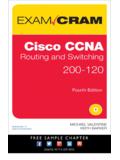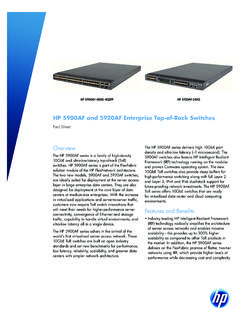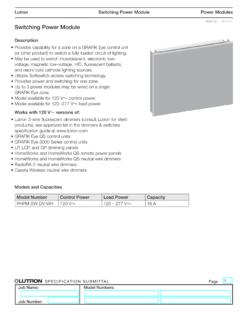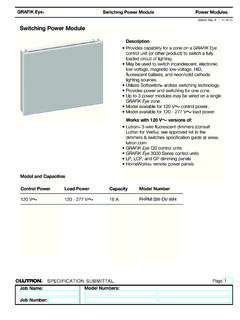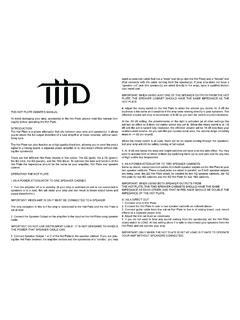Transcription of Separate Transmit/Receive Antenna Switching Phil Salas – …
1 Separate Transmit/Receive Antenna Switching phil Salas AD5X Introduction There are times when it can be beneficial to use Separate antennas for transmitting and receiving. As an example, a vertical Antenna can be a great radiator on 160 and 80 meters, but it may also be a very noisy receiving Antenna . So maybe the low-noise characteristics of a magnetic loop Antenna or a beverage Antenna may sometimes be desired for receiving. Now many higher-end transceivers have a Separate Antenna connector for a receive -only Antenna . But my IC-706 MKIIG, like most low-to-moderate priced transceivers, does not. However, it is not difficult to provide Separate T/R Antenna Switching externally for most radios.
2 Design Consideration The T/R Antenna switch uses a relay for Antenna Switching , under control of the amplifier interface available on most transceivers. Since lead lengths and their associated inductances are very forgiving at frequencies below 30 MHz, the important thing becomes the current rating of the relay contacts and the relay Switching time, as it is important for the relay to fully energize before your transmitter puts out power. The heart of this unit is the Fujitsu 10-amp SPDT relay called out in the parts list (Table 1). This relay has a specified maximum Switching time of 10 milliseconds. I measured the HSEND-to-RF Output on my IC-706 MKIIG as 12-15 milliseconds from start of the output RF to full RF power.
3 So the 10 millisecond Switching time of this relay is perfect for this transceiver. The Circuit Figure 1 is the schematic of the Antenna switch. The relay driver interface is pretty generic and should work with most transceivers that provide an open-collector transistor to ground for enabling an external amplifier. On the IC-706 MKIIG, the HSEND output is a bi-directional output that must only drive a high impedance load, and should not be pulled up higher than 8-volts. For most other transceivers you can just connect the +8V point to a + input as is shown by the dashed line on the schematic. The LED shows when the TX Antenna has been selected.
4 You can add a SPST switch in series with the either the +8 or + inputs to disable the switch when desired. I found it just as easy to unplug the interface cable to the transceiver when the Separate Antenna Switching is not needed. I used SO-239 connectors for the RF interfaces, and a Molex 4-pin miniature connector for the control signals. All circuitry is wired on two terminal strips. The relay and LED are mounted by hot-gluing them to the bottom of the aluminum box. Photos A and B show the inside and outside of the Transmit/Receive Antenna switch. Conclusion I ve described a simple external Antenna switch for Separate Transmit/Receive Antenna Switching .
5 If your transceiver doesn t have a Separate receive -only Antenna connector, this switch will inexpensively solve this problem. phil AD5X Table 1: Parts List QTY Description Source Price ea. 1 AL box Mouser 546-1411BU $ 1 SPDT 10-amp relay Mouser 817-FTR-H1CA012V $ 1 4-pin Molex plug Mouser 538-030-06-2043 $ 1 4-pin Molex socket Mouser 538-03-06-1044 $ 4 F contacts Mouser 538-02-06-1103 $ 4 M contacts Mouser 538-02-06-2103 $ 2 Terminal Strip Mouser 158-1005 $ 3 SO-239 connectors All Electronics SO-239 $ 1 2N2222A transistor All Electronics 2N2222A 2/$ 1 2N3906 transistor All Electronics 2N3906 5/$ 1 Ultrabright red LED All Electronics LED-94 $ 1 10K resistor All Electronics 10K-1/4 5/$ 3 1K resistor All Electronics 1K-1/4 5/$ 1 1N4001 diode All Electronics 1N4001 15/$
6 Xcvr SO-239 Rcv Ant. SO-239 TX Ant. SO-239 10K 1K 1K 1K 2N3906 2N2222 LED + to Pin 8 HSEND to Pin 3 GND to Pin 2 1N4001 RLY1 +8V to Pin 1 Short for non-Icom xcvrs (see text) Figure 1: Schematic - Separate Transmit/Receive Antenna switch Photo A: Inside Wiring Photo B: External view


